ICA
-
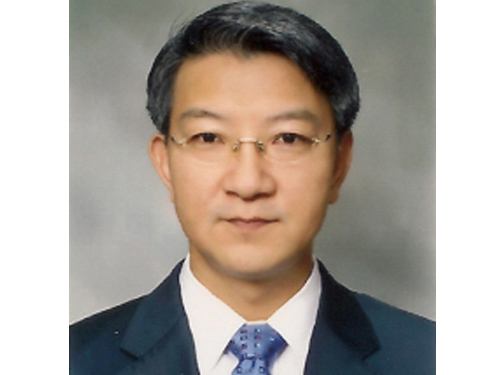 Distinguished Professor Sang Yup Lee Accepts an Honorary Professorship at Beijing University of Chemical Technology
Distinguished Professor Sang Yup Lee of the Department of Chemical and Biomolecular Engineering at KAIST has been appointed an honorary professor at Beijing University of Chemical Technology (BUCT). Founded in 1958, BUCT is one of the outstanding universities in mainland China, especially in chemistry studies.
In addition to the Chinese Academy of Sciences (2012), Shanghai Jiao Tong University (2013), Wuhan University (2014), and Hebei University of Technology (2014), this is the fifth honorary professorship Professor Lee has received from higher education institutions in China.
Professor Lee was recognized for his pioneering research in systems metabolic engineering of microorganisms necessary for the development of green chemical industries. He succeeded in producing succinic acid through bacterial fermentation and engineering plastic raw materials in the most effective and economical method for the first time in the world. Professor Lee also developed polylactic acid, a bio-based polymer that allows plastics to be produced through natural and renewable resources, as well as the microbial production of alkanes, an alternative to gasoline that can be produced from fatty acids.
Professor Lee has been actively working as a member of a group of global leaders supported by the World Economic Forum (WEF), serving as the Chairman of the Future of Chemicals, Advanced Materials & Biotechnology, Global Agenda Councils, WEF.
2014.11.13 View 13029
Distinguished Professor Sang Yup Lee Accepts an Honorary Professorship at Beijing University of Chemical Technology
Distinguished Professor Sang Yup Lee of the Department of Chemical and Biomolecular Engineering at KAIST has been appointed an honorary professor at Beijing University of Chemical Technology (BUCT). Founded in 1958, BUCT is one of the outstanding universities in mainland China, especially in chemistry studies.
In addition to the Chinese Academy of Sciences (2012), Shanghai Jiao Tong University (2013), Wuhan University (2014), and Hebei University of Technology (2014), this is the fifth honorary professorship Professor Lee has received from higher education institutions in China.
Professor Lee was recognized for his pioneering research in systems metabolic engineering of microorganisms necessary for the development of green chemical industries. He succeeded in producing succinic acid through bacterial fermentation and engineering plastic raw materials in the most effective and economical method for the first time in the world. Professor Lee also developed polylactic acid, a bio-based polymer that allows plastics to be produced through natural and renewable resources, as well as the microbial production of alkanes, an alternative to gasoline that can be produced from fatty acids.
Professor Lee has been actively working as a member of a group of global leaders supported by the World Economic Forum (WEF), serving as the Chairman of the Future of Chemicals, Advanced Materials & Biotechnology, Global Agenda Councils, WEF.
2014.11.13 View 13029 -
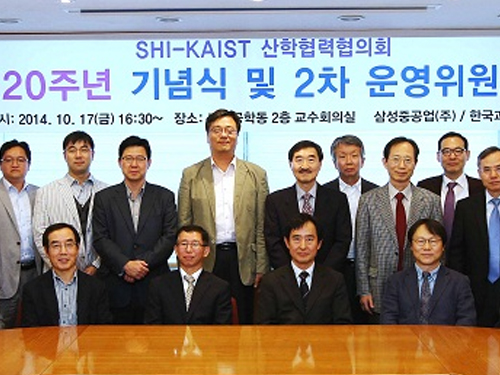 KAIST and Samsung Heavy Industries Celebrate 20 Years of Cooperation
KAIST and Samsung Heavy Industries (SHI) celebrated the twentieth anniversary of their university-industry cooperation in shipbuilding and ocean technology research. Established in 1995, the cooperation has remained steadfast for two decades, even times when Korea suffered gravely from its financial crisis in late 1990s.
A ceremony to commemorate the cooperation took place at the Mechanical Engineering Building on October 17, 2014. About thirty distinguished guests including the Head of the Department of Mechanical Engineering, Professor Choong-Sik Bae, and the chief engineer of SHI Marine Research Institute, Dr. Jong-Soo Seo, participated in the ceremony.
The cooperation programs included appointing advisory professors for technological support, implementing business-based academic courses, offering university-industry wide open lectures, opening regular courses for auditing, and finding possible joint researches. Through this cooperation, Samsung has secured technologies needed for industry, and KAIST has produced students who have real-world experience in industrial fields.
Twenty years of cooperation has produced shining results by running various programs such as technological advice, special lectures, small-scale research projects, consignment research projects, and courses for research and design personnel.
For example, what started as a small-scale research project with USD 4,800 in funding, the LNG (Liquefied Natural Gas) related research has grown into a large-scale research project with a total of USD 2.85 million in funding. As a result, they developed a secondary barrier for LNG carriers which was recognized by Lloyd‘s Register. Their research eventually lowered ship manufacturing costs tremendously.
In 2003, the cooperation project received the presidential citation from the University-Industry Cooperation Competition organized by the Federation of Korean Industries.
KAIST and SHI planned to increase their cooperation to make it Korea’s leading university-industry cooperation program.
Professor Bae said, “Our programs to focus on solving industrial problems have turned out quite successful.” He emphasized that “for this reason, the cooperation even continued during the Asian financial crisis in 1997.”
He added, “By expanding the current cooperation, we aim to make it an exemplary program that contributes to Korea’s shipbuilding and ocean plant industries.”
2014.10.21 View 10918
KAIST and Samsung Heavy Industries Celebrate 20 Years of Cooperation
KAIST and Samsung Heavy Industries (SHI) celebrated the twentieth anniversary of their university-industry cooperation in shipbuilding and ocean technology research. Established in 1995, the cooperation has remained steadfast for two decades, even times when Korea suffered gravely from its financial crisis in late 1990s.
A ceremony to commemorate the cooperation took place at the Mechanical Engineering Building on October 17, 2014. About thirty distinguished guests including the Head of the Department of Mechanical Engineering, Professor Choong-Sik Bae, and the chief engineer of SHI Marine Research Institute, Dr. Jong-Soo Seo, participated in the ceremony.
The cooperation programs included appointing advisory professors for technological support, implementing business-based academic courses, offering university-industry wide open lectures, opening regular courses for auditing, and finding possible joint researches. Through this cooperation, Samsung has secured technologies needed for industry, and KAIST has produced students who have real-world experience in industrial fields.
Twenty years of cooperation has produced shining results by running various programs such as technological advice, special lectures, small-scale research projects, consignment research projects, and courses for research and design personnel.
For example, what started as a small-scale research project with USD 4,800 in funding, the LNG (Liquefied Natural Gas) related research has grown into a large-scale research project with a total of USD 2.85 million in funding. As a result, they developed a secondary barrier for LNG carriers which was recognized by Lloyd‘s Register. Their research eventually lowered ship manufacturing costs tremendously.
In 2003, the cooperation project received the presidential citation from the University-Industry Cooperation Competition organized by the Federation of Korean Industries.
KAIST and SHI planned to increase their cooperation to make it Korea’s leading university-industry cooperation program.
Professor Bae said, “Our programs to focus on solving industrial problems have turned out quite successful.” He emphasized that “for this reason, the cooperation even continued during the Asian financial crisis in 1997.”
He added, “By expanding the current cooperation, we aim to make it an exemplary program that contributes to Korea’s shipbuilding and ocean plant industries.”
2014.10.21 View 10918 -
 An Artist and Scientist, the Dean of Northwestern University speaks at KAIST
How does an abstract artist look at the world of science? Can art enhance scientific inquiry?
The Department of Chemical and Biomolecular Engineering (CBE), KAIST, invited Professor Julio Mario Ottino to speak at its fourth Annual KAIST CBE Global Distinguished Lectureship from the 15th to 16th October. Professor Ottino is the Dean of the Robert R. McCormick School of Engineering and Applied Science at Northwestern University.
Professor Ottino is a famous artist as well as a scientist. He pursues his disciplines in engineering and art as ways by which an artistic value and scientific truth can coexist. By merging these disciplines, he is praised for adopting balanced engineering education that emphasizes analytical skills and creativity at Northwestern University.
The lecture took place over two days. The topic of the first day was “Creativity” and the next day, “Formalism in Science.”
On the first day, Professor Ottino spoke about “Creativity in Science, Art, and Technology -- How art is separated from science.” He argues that as creativity is essential in art, science, and technology, artistic creativity can help develop scientific and technological creativity.
The next lecture featured “Mixing of Fluids and Solids: Parallels, Divergences, and Lessons.”
He emphasized that the birth of mixing of fluids and researches on granular matter and segregation offered valuable insights and lessons. Although these two topics have developed in different ways, he laid down some examples on how scientific theories have progressed under formalism.
2014.10.16 View 9389
An Artist and Scientist, the Dean of Northwestern University speaks at KAIST
How does an abstract artist look at the world of science? Can art enhance scientific inquiry?
The Department of Chemical and Biomolecular Engineering (CBE), KAIST, invited Professor Julio Mario Ottino to speak at its fourth Annual KAIST CBE Global Distinguished Lectureship from the 15th to 16th October. Professor Ottino is the Dean of the Robert R. McCormick School of Engineering and Applied Science at Northwestern University.
Professor Ottino is a famous artist as well as a scientist. He pursues his disciplines in engineering and art as ways by which an artistic value and scientific truth can coexist. By merging these disciplines, he is praised for adopting balanced engineering education that emphasizes analytical skills and creativity at Northwestern University.
The lecture took place over two days. The topic of the first day was “Creativity” and the next day, “Formalism in Science.”
On the first day, Professor Ottino spoke about “Creativity in Science, Art, and Technology -- How art is separated from science.” He argues that as creativity is essential in art, science, and technology, artistic creativity can help develop scientific and technological creativity.
The next lecture featured “Mixing of Fluids and Solids: Parallels, Divergences, and Lessons.”
He emphasized that the birth of mixing of fluids and researches on granular matter and segregation offered valuable insights and lessons. Although these two topics have developed in different ways, he laid down some examples on how scientific theories have progressed under formalism.
2014.10.16 View 9389 -
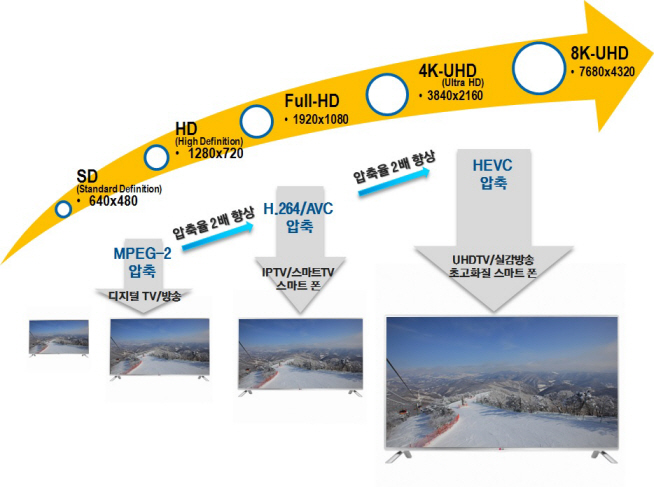 KAIST Registers an Internationally Recognized Standard Patent
A video compression technology, jointly developed by Professor Mun-Chul Kim of the Department of Electrical Engineering at KAIST, the Electronics and Telecommunications Research Institute (ETRI), and the Korean Broadcasting System (KBS), is registered internationally as the standard patent in the next-generation High Efficiency Video Coding (HEVC).
HEVC (H.265) is an international technology standard that compresses large image data for Ultra High Definition (UHD) televisions and smartphones. It has the twice the compression efficiency as that of H.264/AVC which is most commonly used for processing full HD sources. This means that it is able to compress a video file to half the size while maintaining the same image quality.
Although the related market is at a nascent stage, HEVC technology has already been applied to the latest version of televisions and smartphones. Experts predict that the market will grow to USD 200 billion by 2016, and KAIST is expected to receive a royalty payment of USD 9.3 million from this patent.
The International Organization for Standardization (ISO/IEC) established the HEVC standard in January 2013. Also, an international patent pool licensing corporation, MPEG LA announced the HEVC standard patent pool on September 29, 2014.
Professor Joongmyeon Bae, Dean of the Office of University-Industry Cooperation (OUIC) of KAIST, said, “This is an unprecedented case for Korea whereby a core technology developed by a university became an international standard, which has a vast impact on the market.”
President of KAIST, Steve Kang commented, “With its advanced technology, KAIST joined the HEVC standard patent pool as one of the 23 founding members along with Apple, Siemens, and NEC. This is a remarkable achievement.”
Picture 1: Improvements in video compression technology
Picture 2: Comparison of different screen resolutions
2014.10.09 View 14296
KAIST Registers an Internationally Recognized Standard Patent
A video compression technology, jointly developed by Professor Mun-Chul Kim of the Department of Electrical Engineering at KAIST, the Electronics and Telecommunications Research Institute (ETRI), and the Korean Broadcasting System (KBS), is registered internationally as the standard patent in the next-generation High Efficiency Video Coding (HEVC).
HEVC (H.265) is an international technology standard that compresses large image data for Ultra High Definition (UHD) televisions and smartphones. It has the twice the compression efficiency as that of H.264/AVC which is most commonly used for processing full HD sources. This means that it is able to compress a video file to half the size while maintaining the same image quality.
Although the related market is at a nascent stage, HEVC technology has already been applied to the latest version of televisions and smartphones. Experts predict that the market will grow to USD 200 billion by 2016, and KAIST is expected to receive a royalty payment of USD 9.3 million from this patent.
The International Organization for Standardization (ISO/IEC) established the HEVC standard in January 2013. Also, an international patent pool licensing corporation, MPEG LA announced the HEVC standard patent pool on September 29, 2014.
Professor Joongmyeon Bae, Dean of the Office of University-Industry Cooperation (OUIC) of KAIST, said, “This is an unprecedented case for Korea whereby a core technology developed by a university became an international standard, which has a vast impact on the market.”
President of KAIST, Steve Kang commented, “With its advanced technology, KAIST joined the HEVC standard patent pool as one of the 23 founding members along with Apple, Siemens, and NEC. This is a remarkable achievement.”
Picture 1: Improvements in video compression technology
Picture 2: Comparison of different screen resolutions
2014.10.09 View 14296 -
 KAIST Co-owns the HEVC Patent Portfolio License
MPEG LA, LLC, a firm based in Denver, Colorado, which licenses patent pools covering essential patents required for the use of video coding technology, such as MPEG-2, MPEG-4 Visual (Part 2), and HEVC/H.264, announced the availability of the High Efficiency Video Coding (HEVC) Patent Portfolio License on September 29, 2014.
The HEVC standard, also known as H.265 and MPEG-H Part 2, is necessary to improve video coding and transmission efficiency for the Internet, televisions, and mobile gadgets with increased speed and capacity.
Through the portfolio license, users can easily obtain patent rights required for the HEVC standard in a single transaction, instead of negotiating separate licenses from multiple patent holders.
A total of 23 enterprises currently own essential HEVC patents. KAIST is the only Korean university among the joint patent owners. Collaborating with the Korea Broadcasting System (KBS) and the Electronics and Telecommunications Research Institute (ETRI), Professor Mun-Chul Kim of the Electrical Engineering Department at KAIST developed one of the core patents.
For a link to a press release distributed by MPEG LA, LLC, please see:
MPEG LA, LLC, September 29, 2014
"MPEG LA, LLC Offers HEVC Patent Portfolio License"
http://www.mpegla.com/main/Pages/Media.aspx
2014.10.02 View 14800
KAIST Co-owns the HEVC Patent Portfolio License
MPEG LA, LLC, a firm based in Denver, Colorado, which licenses patent pools covering essential patents required for the use of video coding technology, such as MPEG-2, MPEG-4 Visual (Part 2), and HEVC/H.264, announced the availability of the High Efficiency Video Coding (HEVC) Patent Portfolio License on September 29, 2014.
The HEVC standard, also known as H.265 and MPEG-H Part 2, is necessary to improve video coding and transmission efficiency for the Internet, televisions, and mobile gadgets with increased speed and capacity.
Through the portfolio license, users can easily obtain patent rights required for the HEVC standard in a single transaction, instead of negotiating separate licenses from multiple patent holders.
A total of 23 enterprises currently own essential HEVC patents. KAIST is the only Korean university among the joint patent owners. Collaborating with the Korea Broadcasting System (KBS) and the Electronics and Telecommunications Research Institute (ETRI), Professor Mun-Chul Kim of the Electrical Engineering Department at KAIST developed one of the core patents.
For a link to a press release distributed by MPEG LA, LLC, please see:
MPEG LA, LLC, September 29, 2014
"MPEG LA, LLC Offers HEVC Patent Portfolio License"
http://www.mpegla.com/main/Pages/Media.aspx
2014.10.02 View 14800 -
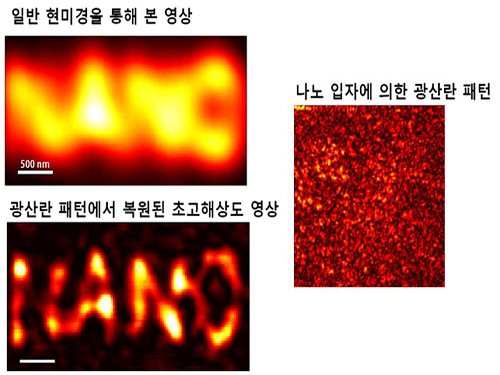 Ultra-high Resolution 2-dimentional Real-time Image Capture with Super Lens
Ultra-high Resolution 2-dimentional Real-time Image Capture with Super Lens
Applications to high-precision semiconductor processing or intracellular structures observation are possible.
A joint research team led by Professors Yongkeun Park and Yong-Hoon Cho from the Department of Physics, KAIST, has succeeded in capturing real-time 2D images at a resolution of 100 nm (nanometers), which was impossible with optical lens due to the diffraction limit of light until now. Its future application includes high-precision semiconductor manufacturing process or observation of intracellular structures.
This research follows the past research of the super-lens developed by Professor Park last April, using paint spray to observe images that have three times higher resolution than those discovered by conventional optical lens.
Since optical lens utilize the refraction of light, the diffraction limit, which prevents achieving focus smaller than the wavelength of light, has always been a barrier for acquiring high-resolution images. In the past, it was impossible to observe objects less than the size of 200 to 300 nm in the visible light spectrum.
In order to solve the problem of near-field extinction due to scattering of light, the research team used spray paint consisting of nano-particles massed with dense scattering materials to obtain high-resolution information.
Then, by calculating and restoring the first scattering shape of light using the time reversibility of light, the researchers were able to overcome the diffraction limit. The original position of an object to be observed is obtained by deriving the complex trajectory of the light, and reversing the time to locate the particular position of the object.
Professor Park said, “This new technology can be used as the core technology in all fields which require optical measurement and control. The existing electron microscopy cannot observe cells without destroying them, but the new technology allows us to visualize at ultra-high resolution without destruction.”
The research results were published online in the 9th edition of Physical Review Letters, a prestigious international journal in the field of physics.
2014.09.23 View 11241
Ultra-high Resolution 2-dimentional Real-time Image Capture with Super Lens
Ultra-high Resolution 2-dimentional Real-time Image Capture with Super Lens
Applications to high-precision semiconductor processing or intracellular structures observation are possible.
A joint research team led by Professors Yongkeun Park and Yong-Hoon Cho from the Department of Physics, KAIST, has succeeded in capturing real-time 2D images at a resolution of 100 nm (nanometers), which was impossible with optical lens due to the diffraction limit of light until now. Its future application includes high-precision semiconductor manufacturing process or observation of intracellular structures.
This research follows the past research of the super-lens developed by Professor Park last April, using paint spray to observe images that have three times higher resolution than those discovered by conventional optical lens.
Since optical lens utilize the refraction of light, the diffraction limit, which prevents achieving focus smaller than the wavelength of light, has always been a barrier for acquiring high-resolution images. In the past, it was impossible to observe objects less than the size of 200 to 300 nm in the visible light spectrum.
In order to solve the problem of near-field extinction due to scattering of light, the research team used spray paint consisting of nano-particles massed with dense scattering materials to obtain high-resolution information.
Then, by calculating and restoring the first scattering shape of light using the time reversibility of light, the researchers were able to overcome the diffraction limit. The original position of an object to be observed is obtained by deriving the complex trajectory of the light, and reversing the time to locate the particular position of the object.
Professor Park said, “This new technology can be used as the core technology in all fields which require optical measurement and control. The existing electron microscopy cannot observe cells without destroying them, but the new technology allows us to visualize at ultra-high resolution without destruction.”
The research results were published online in the 9th edition of Physical Review Letters, a prestigious international journal in the field of physics.
2014.09.23 View 11241 -
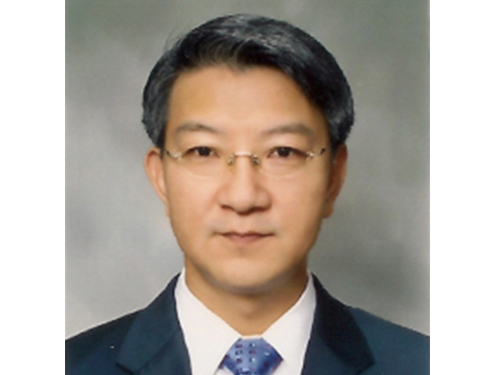 Distinguished Professor Sang Yup Lee Gives Special Lecture at Tianjin University, China
Distinguished Professor Sang Yup Lee from the Department of Chemical and Biomolecular Engineering at KAIST gave a special lecture at Tianjin University, China, on September 12, 2014.
The university has invited prestigious scholars and scientists including Nobel Prize laureates from all around the world to their program called the "BeiYang Lecture Series."
Professor Lee said:
"The lecture series has invited many eminent global leaders such as Dr. Steven Chu, who received the Nobel Prize in Physics in 1997 and also served the 12th United States Secretary of Energy. It is a great honor to participate in the program as a speaker. The university told me that in recognition of my research in the development of sustainable biochemical industry through systems metabolic engineering, I was invited to speak.”
Professor Lee presented his speech entitled “Production of Chemical Materials through Microorganism Metabolic Systems Engineering” and took questions from the audience.
Professor Lee developed the world’s most efficient microorganism and bioprocess such as succinate, butanol, and engineering plastic raw materials. In recent years, he has succeeded in producing a small quantity of gasoline through converting in-vivo generated fatty acids.
2014.09.16 View 10528
Distinguished Professor Sang Yup Lee Gives Special Lecture at Tianjin University, China
Distinguished Professor Sang Yup Lee from the Department of Chemical and Biomolecular Engineering at KAIST gave a special lecture at Tianjin University, China, on September 12, 2014.
The university has invited prestigious scholars and scientists including Nobel Prize laureates from all around the world to their program called the "BeiYang Lecture Series."
Professor Lee said:
"The lecture series has invited many eminent global leaders such as Dr. Steven Chu, who received the Nobel Prize in Physics in 1997 and also served the 12th United States Secretary of Energy. It is a great honor to participate in the program as a speaker. The university told me that in recognition of my research in the development of sustainable biochemical industry through systems metabolic engineering, I was invited to speak.”
Professor Lee presented his speech entitled “Production of Chemical Materials through Microorganism Metabolic Systems Engineering” and took questions from the audience.
Professor Lee developed the world’s most efficient microorganism and bioprocess such as succinate, butanol, and engineering plastic raw materials. In recent years, he has succeeded in producing a small quantity of gasoline through converting in-vivo generated fatty acids.
2014.09.16 View 10528 -
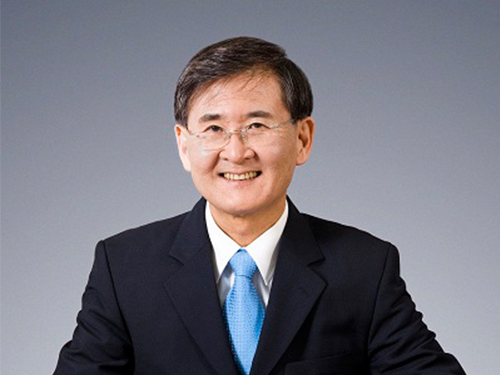 President Steve Kang of KAIST Attends the 2014 Summer Davos Forum in Tianjin, China
President Steve Kang of KAIST will attend the 2014 Annual Meeting of the New Champions, the World Economic Forum (WEF), to be held on September 10-12, 2014 in Tianjin, China.
KAIST holds its own IdeasLab session on nanotechnology on September 12, 2014.
On September 10, 2014, President Steve Kang will participate in a private session hosted by the Global University Leaders Forum (GULF) community at WEF as a panelist.
In addition to President Kang, eight presidents from top global universities such as the National University of Singapore, Peking University, ETH Zurich (Swiss Federal Institute of Technology), University of Tokyo, and Carnegie Mellon University will join the panel discussion under the topic, “Increasing the Translational Impact of University Research.” Specifically, the presidents will address issues related to the importance of university-led technology transfer in Asia, key strategies and goals for technology transfer, and implementation approaches taken by each university to promote technology transfer from university to industry.
President Kang was invited to this GULF session, the only attendant from Korean universities, in recognition of his long time experience and expertise in education and research.
In 2006, WEF created the GULF, a small community of the presidents of top universities in the world, aiming to offer an open platform for high-level dialogues on issues of higher education and research with other sectors, as well as to foster collaboration between universities in areas of significance for global policy.
As of 2014, a total of 25 globally leading universities, including Harvard University, University of Cambridge, and Massachusetts Institute of Technology, are GULF members. KAIST, which joined the club this year, is the only Korean university.
The 2014 Annual Meeting of the New Champions, also known as the Summer Davos Forum, hosts numerous sessions under the theme of “Creating Value through Innovation.” At the Forum, a total of ten IdeasLab sessions will be hosted. KAIST was invited to run its own IdeasLab on nanotechnology on September 12, 2014.
Together with President Kang, Professors Sang Ouk Kim and Keon Jae Lee from the Department of Materials Science Engineering, KAIST, and Professors Sang Yup Lee and Hyunjoo Lee from the Department of Chemical and Biomolecular Engineering, KAIST, will present their own speeches on the topic entitled “From diagnostics to materials, how is nanotechnology changing lives?”
President Kang will give the opening speech at the KAIST IdeasLab.
He said that an invitation from WEF to join the IdeasLab spoke well for KAIST:
“KAIST is the first and the only Korean university ever invited to run its own IdeasLab at the World Economic Forum. The IdeasLab is an expert group meeting, conducted only by the world’s most prestigious universities and research institutes. At the IdeasLab sessions, global leaders from different sectors identify major issues facing higher education and humanity and explore solutions through science and technology innovation. Holding our own IdeasLab on one of our strongest fields, nanotechnology, is indeed an excellent opportunity for KAIST to show its strength in academic and research excellence on the global stage.”
2014.09.08 View 15996
President Steve Kang of KAIST Attends the 2014 Summer Davos Forum in Tianjin, China
President Steve Kang of KAIST will attend the 2014 Annual Meeting of the New Champions, the World Economic Forum (WEF), to be held on September 10-12, 2014 in Tianjin, China.
KAIST holds its own IdeasLab session on nanotechnology on September 12, 2014.
On September 10, 2014, President Steve Kang will participate in a private session hosted by the Global University Leaders Forum (GULF) community at WEF as a panelist.
In addition to President Kang, eight presidents from top global universities such as the National University of Singapore, Peking University, ETH Zurich (Swiss Federal Institute of Technology), University of Tokyo, and Carnegie Mellon University will join the panel discussion under the topic, “Increasing the Translational Impact of University Research.” Specifically, the presidents will address issues related to the importance of university-led technology transfer in Asia, key strategies and goals for technology transfer, and implementation approaches taken by each university to promote technology transfer from university to industry.
President Kang was invited to this GULF session, the only attendant from Korean universities, in recognition of his long time experience and expertise in education and research.
In 2006, WEF created the GULF, a small community of the presidents of top universities in the world, aiming to offer an open platform for high-level dialogues on issues of higher education and research with other sectors, as well as to foster collaboration between universities in areas of significance for global policy.
As of 2014, a total of 25 globally leading universities, including Harvard University, University of Cambridge, and Massachusetts Institute of Technology, are GULF members. KAIST, which joined the club this year, is the only Korean university.
The 2014 Annual Meeting of the New Champions, also known as the Summer Davos Forum, hosts numerous sessions under the theme of “Creating Value through Innovation.” At the Forum, a total of ten IdeasLab sessions will be hosted. KAIST was invited to run its own IdeasLab on nanotechnology on September 12, 2014.
Together with President Kang, Professors Sang Ouk Kim and Keon Jae Lee from the Department of Materials Science Engineering, KAIST, and Professors Sang Yup Lee and Hyunjoo Lee from the Department of Chemical and Biomolecular Engineering, KAIST, will present their own speeches on the topic entitled “From diagnostics to materials, how is nanotechnology changing lives?”
President Kang will give the opening speech at the KAIST IdeasLab.
He said that an invitation from WEF to join the IdeasLab spoke well for KAIST:
“KAIST is the first and the only Korean university ever invited to run its own IdeasLab at the World Economic Forum. The IdeasLab is an expert group meeting, conducted only by the world’s most prestigious universities and research institutes. At the IdeasLab sessions, global leaders from different sectors identify major issues facing higher education and humanity and explore solutions through science and technology innovation. Holding our own IdeasLab on one of our strongest fields, nanotechnology, is indeed an excellent opportunity for KAIST to show its strength in academic and research excellence on the global stage.”
2014.09.08 View 15996 -
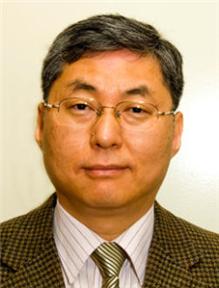 Kiseok Song, a Ph.D. candidate in the Electrical Engineering Department, receives the 2014 Marconi Society Young Scholar Award
Established
in 1974 to commemorate the eminent Italian inventor and electrical engineer,
Guglielmo Marconi, the Marconi Society has recognized significant contributions
in science and technology by awarding the Marconi Prize, with an annual USD
100,000 grant, to a living scientist who has made great advancements in
communications technology.
Along
with the Marconi Prize, the Society has been presenting the Young Scholars
Awards over the past six years to reward young and emerging scientists’ brilliant
academic and research achievements as well as their entrepreneurship. For this
year’s seventh Young Scholar Awards, a KAIST doctoral student was selected as
one of the two recipients.
Kiseok
Song, a Ph.D. candidate in the Department of Electrical Engineering, KAIST, has
been named as a 2014 Marconi Society Paul Baran Young Scholar. The Marconi Society said that Song was being recognized for "his
academic achievements and leadership in the field of communications and
information science,” according to a press release distributed by the Society on August 28, 2014.
Studying
under the advice of Professor Hoi-Jun Yoo of the Department of Electrical
Engineering at KAIST, Song has developed bio-medical System on a Chip (SoC)
such as smart wireless bio-medical systems combined with optimized SoCs,
compact bio-medical patch systems connected to smart phones, smart electro-acupuncture
and transdermal drug delivery, and multi-modal non-invasive glucose monitors.
The
press release quoted Professor Yoo’s comment on the meaning of Song’s research:
“All
of these bio-medical systems open a new healthcare paradigm to improve people’s
quality of life in combination with the current mobile smart phones.”
In
addition to Song, Himanshu Asnani, a Stanford Ph.D. candidate and system engineer
at Ericsson Silicon Valley, received the other award. The award
ceremony will be held at the Marconi Society’s annual award gala at the
National Academies of Science Building in Washington D.C., on October 2, 2014.
For
details, please read the following press release:
The
Marconi Society, Press Release, August 28, 2014
“Kiseok
Song Receives the 2014 Marconi Society Young Scholar Award”
http://www.marconisociety.org/press/2014Song.html
2014.09.08 View 9982
Kiseok Song, a Ph.D. candidate in the Electrical Engineering Department, receives the 2014 Marconi Society Young Scholar Award
Established
in 1974 to commemorate the eminent Italian inventor and electrical engineer,
Guglielmo Marconi, the Marconi Society has recognized significant contributions
in science and technology by awarding the Marconi Prize, with an annual USD
100,000 grant, to a living scientist who has made great advancements in
communications technology.
Along
with the Marconi Prize, the Society has been presenting the Young Scholars
Awards over the past six years to reward young and emerging scientists’ brilliant
academic and research achievements as well as their entrepreneurship. For this
year’s seventh Young Scholar Awards, a KAIST doctoral student was selected as
one of the two recipients.
Kiseok
Song, a Ph.D. candidate in the Department of Electrical Engineering, KAIST, has
been named as a 2014 Marconi Society Paul Baran Young Scholar. The Marconi Society said that Song was being recognized for "his
academic achievements and leadership in the field of communications and
information science,” according to a press release distributed by the Society on August 28, 2014.
Studying
under the advice of Professor Hoi-Jun Yoo of the Department of Electrical
Engineering at KAIST, Song has developed bio-medical System on a Chip (SoC)
such as smart wireless bio-medical systems combined with optimized SoCs,
compact bio-medical patch systems connected to smart phones, smart electro-acupuncture
and transdermal drug delivery, and multi-modal non-invasive glucose monitors.
The
press release quoted Professor Yoo’s comment on the meaning of Song’s research:
“All
of these bio-medical systems open a new healthcare paradigm to improve people’s
quality of life in combination with the current mobile smart phones.”
In
addition to Song, Himanshu Asnani, a Stanford Ph.D. candidate and system engineer
at Ericsson Silicon Valley, received the other award. The award
ceremony will be held at the Marconi Society’s annual award gala at the
National Academies of Science Building in Washington D.C., on October 2, 2014.
For
details, please read the following press release:
The
Marconi Society, Press Release, August 28, 2014
“Kiseok
Song Receives the 2014 Marconi Society Young Scholar Award”
http://www.marconisociety.org/press/2014Song.html
2014.09.08 View 9982 -
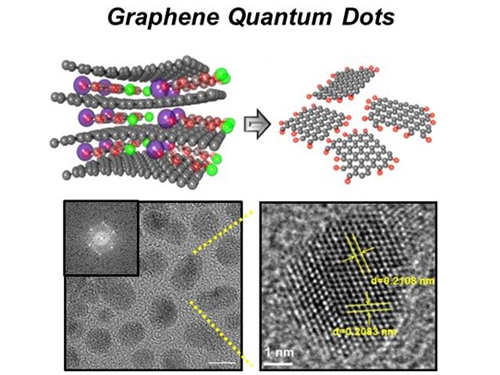 News Article on the Development of Synthesis Process for Graphene Quantum Dots
Before It's News, an international online news agency, highlighted the recent research conducted by KAIST professors (Seokwoo Jeon of the Department of Materials Science and Engineering, Yong-Hoon Cho of the Department of Physics, and Seunghyup Yoo of the Department of Electrical Engineering) on the development of synthesis process for graphene quantum dots, nanometer-sized round semiconductor nanoparticles that are very efficient at emitting photons. If commercialized, this synthetic technology will lead the way to the development of paper-thin displays in the future.
For the article, please go to the link below:
Before It’s News, September 3, 2014“Graphene quantum dots prove highly efficient in emitting light”
http://beforeitsnews.com/science-and-technology/2014/09/graphene-quantum-dots-prove-highly-efficient-in-emitting-light-2718190.html
2014.09.07 View 15348
News Article on the Development of Synthesis Process for Graphene Quantum Dots
Before It's News, an international online news agency, highlighted the recent research conducted by KAIST professors (Seokwoo Jeon of the Department of Materials Science and Engineering, Yong-Hoon Cho of the Department of Physics, and Seunghyup Yoo of the Department of Electrical Engineering) on the development of synthesis process for graphene quantum dots, nanometer-sized round semiconductor nanoparticles that are very efficient at emitting photons. If commercialized, this synthetic technology will lead the way to the development of paper-thin displays in the future.
For the article, please go to the link below:
Before It’s News, September 3, 2014“Graphene quantum dots prove highly efficient in emitting light”
http://beforeitsnews.com/science-and-technology/2014/09/graphene-quantum-dots-prove-highly-efficient-in-emitting-light-2718190.html
2014.09.07 View 15348 -
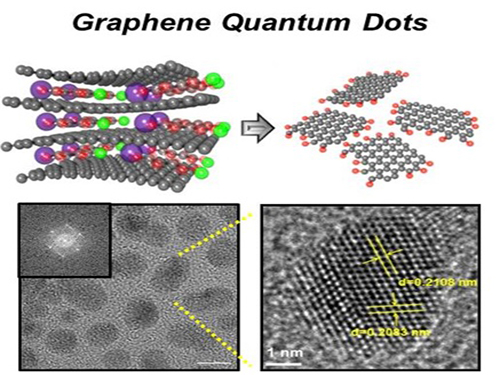 Extracting Light from Graphite: Core Technology of Graphene Quantum Dots Display Developed
Professor Seokwoo Jeon of the Department of Materials Science and Engineering, Professor Yong-Hoon Cho of the Department of Physics, and Professor Seunghyup Yoo of the Department of Electrical Engineering announced that they were able to develop topnotch graphene quantum dots from graphite.
Using the method of synthesizing graphite intercalation compound from graphite with salt and water, the research team developed graphene quantum dots in an ecofriendly way.
The quantum dots have a diameter of 5 nanometers with their sizes equal and yield high quantum efficiency. Unlike conventional quantum dots, they are not comprised of toxic materials such as lead or cadmium. As the quantum dots can be developed from materials which can be easily found in the nature, researchers look forward to putting these into mass production at low cost.
The research team also discovered a luminescence mechanism of graphene quantum dots and confirmed the possibility of commercial use by developing quantum dot light-emitting diodes with brightness of 1,000 cd/m2, which is greater than that of cellphone displays.
Professor Seokwoo Jeon said, “Although quantum dot LEDs have a lower luminous efficiency than existing ones, their luminescent property can be further improved” and emphasized that “using quantum dot displays will allow us to develop not only paper-thin displays but also flexible ones.”
Sponsored by Graphene Research Center in KAIST Institute for NanoCentury, the research finding was published online in the April 20th issue of Advanced Optical Materials.
Picture 1: Graphene quantum dots and their synthesis
Picture 2: Luminescence mechanism of graphene quantum dots
Picture 3: Structure of graphene quantum dots LED and its emission
2014.09.06 View 19877
Extracting Light from Graphite: Core Technology of Graphene Quantum Dots Display Developed
Professor Seokwoo Jeon of the Department of Materials Science and Engineering, Professor Yong-Hoon Cho of the Department of Physics, and Professor Seunghyup Yoo of the Department of Electrical Engineering announced that they were able to develop topnotch graphene quantum dots from graphite.
Using the method of synthesizing graphite intercalation compound from graphite with salt and water, the research team developed graphene quantum dots in an ecofriendly way.
The quantum dots have a diameter of 5 nanometers with their sizes equal and yield high quantum efficiency. Unlike conventional quantum dots, they are not comprised of toxic materials such as lead or cadmium. As the quantum dots can be developed from materials which can be easily found in the nature, researchers look forward to putting these into mass production at low cost.
The research team also discovered a luminescence mechanism of graphene quantum dots and confirmed the possibility of commercial use by developing quantum dot light-emitting diodes with brightness of 1,000 cd/m2, which is greater than that of cellphone displays.
Professor Seokwoo Jeon said, “Although quantum dot LEDs have a lower luminous efficiency than existing ones, their luminescent property can be further improved” and emphasized that “using quantum dot displays will allow us to develop not only paper-thin displays but also flexible ones.”
Sponsored by Graphene Research Center in KAIST Institute for NanoCentury, the research finding was published online in the April 20th issue of Advanced Optical Materials.
Picture 1: Graphene quantum dots and their synthesis
Picture 2: Luminescence mechanism of graphene quantum dots
Picture 3: Structure of graphene quantum dots LED and its emission
2014.09.06 View 19877 -
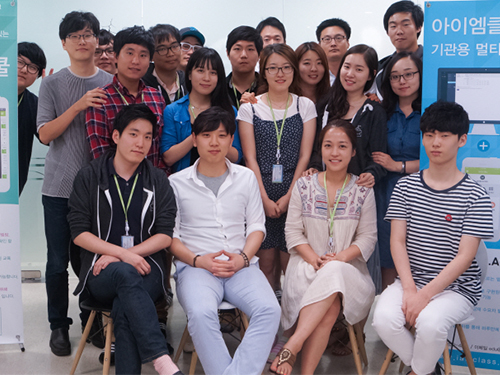 IAMCOMPANY, an educational technology startup created by a KAIST student
In-Mo Chung, a senior student of the Department of Industrial Design at KAIST, developed a mobile homework book application, IAMSCHOOL, in order to help parents engage, more interactively, in their children’s school activities.
Chung said in an interview with KAIST:
“I came up with creating my company, IAMCOMPANY, when I worked as a volunteer for a student club in 2009 that provides an educational service to high school students living in a less-favored environment. I found out their educational environment very poor, which ultimately led me to build a public interest business model for education.”
Chung created a few mobile applications including IAMSCHOOL and IAMCLASS. The application, IAMSCHOOL, receives school’s notices, homework assignments, or any information related to classes and sends them directly and immediately to parents, allowing real-time communications between parents and teachers. In Korea, parents usually check as many as 50 school notices per month.
Once registered, private educational institutes and public organizations can also receive school information through this application.
In July 2011, the Department of Science Management at KAIST hosted a student competition for startup ideas, and Chung’s idea to build an educational application won the best award. In 2012, he received the grand prize at the KAIST E-5 Startup Competition.
An undergraduate student who is the chief executive officer of a tech startup
Chung established IAMCOMPANY with the seed fund of 13 million Korean won that he had received from the city government of Daejeon. His business idea was selected as one of the 300 College Student Startup Projects, a startup support program operated by Daejeon City to encourage entrepreneurship among college and university students.
Chung talked about the background of his business:
“I think that my idea to offer a “free educational application” helped me win the first prize at the student startup competition. At that time, I was still young, so I considered the winning of the competition as an “exercise” to build my own business in the future. But when I actually started my company, I found out that KAIST’s startup programs helped me a lot throughout the entire process and realized that these programs are good enough for young entrepreneurs to build up their company from a single idea.”
KAIST professors and staff support student startups.
Chung took in-depth mentoring from KAIST professors. Professor Min-Hwa Lee of the Department of Management Science and Professor Lak-Kyoung Song of the Department of Technology Management, who is also the president of the Daejeon Creative Economy Innovation Center, have supported Chung’s endeavors. President Taek-Su Kang of the KAIST Innovation Center gave Chung a lot of advice as he was developing IAMCOMPANY’s initial business model. Chung said that even now, they look for solutions together when his business ran into a brick wall.
Professor Lee said, “IAMCOMPANY does not aim for profit. Instead, by supplying free applications, they improve the environment of education and eventually create public interest. Also, they find out consumers’ hidden demands and satisfied it creatively.”
With 8,000 schools registered to IAMSCHOOL, 750,000 parents are using the application in just two years of its release. Parents and teachers responded enthusiastically.
The application “IAMSCHOOL” provides services for 8,000 schools in Korea. Currently, 750,000 parents are using this application.
The company offers the nation’s largest online education service. The reason behind their rapid growth is that their service solves communications problems between schools and parents in a simple and efficient manner.
Jung-Mi Hwang, a teacher at Galma Elementary School in Dajeon, said:
“After using this application, there are fewer occasions of students forgetting their school materials. We think this is because the parents can check the school notices and newsletters at any time through the application.”
She added, “I hope more and more schools will use this application because it is convenient and also available for free.”
Another teacher from Daedeok Elementary School in Daejeon, Dong-Min Nam, said that “many parents like this application since they are immediately notified with school events.”
KAIST’s Technology Business Incubation Center
“After moving around many places due to expensive rent,” Chung said that “we finally moved into the Technology Business Incubation Center (TBIC) at KAIST. The center helped us not only providing the space, but also mentoring and connecting us with venture investment companies. This was a great help in attracting initial investments.”
Chung added:
“At first, a staff member from TBIC was concerned about the viability of my company. I was then an undergraduate student with zero business experience, and from his standpoint, I was taking a huge risk.”
But in several months after its establishment, IAMCOMPANY has grown to have 16 employees.
An investment of 1.5 billion Korean won from a venture capital company led to a sustainable growth.
In early stage, IAMCOMPANY received 300 million Korean won from a venture capital company, and it recently attracted additional 1.2 billion won from a leading venture capital. With these investments, the company grew further. Moreover, investments from large educational corporations have proved the value and competitiveness of the company in the education market.
Chung plans to expand his service globally, particularly in China and Singapore.
He said that he would not forget how he had started his business, and with such a focused mind, he would strive to provide students and parents with quality educational services while proactively incorporating the advanced information technology (IT) into his products.
A bold movement to Pangyo Techno Valley, a Korean version of Silicon Valley
Although the company started with only two members, as of August 2014, it boasts of having twenty employees, a remarkable leap of growth within just two years.
In April this year, Chung relocated his office from TBIC to Pangyo Techno Valley, the Silicon Valley of Korea, in order to provide a better work environment to his staff.
It was not an easy decision for him to leave the comfortable, well-known place, the KAIST campus, and the colleagues, including TBIC staff and KAIST professors, who had helped his startup efforts in early days. However, in order to recruit better employees and to access additional IT resources and education-related companies, Chung decided to make a bold movement, relocating his business to Pangyo Techno Valley in Seoul.
A reputable American venture capital investor, Timothy C. Draper, invested in IAMCOMPANY
Chung was able to secure solid support from an eminent global investor, Timothy C. Draper, the founder of Draper Fisher Jurvetson, a venture capital based in Menlo Park in California.
Recently, Draper, a legendary investor of the Silicon Valley, invested USD 20,000 in IAMCOMPANY. Draper discovered worldwide venture companies such as Hotmail, Skype, and Baidu. IAMCOMPANY received high marks from him as a company with a competitive edge in the global education market.
Chung met Draper in April 2014 when he participated in a television network’s (Korean Broadcasting System) audition program for startups. Draper was one of the judges for the program, and he was impressed by the robust growth of IAMCOMPANY. He eventually made a decision to chip in USD 20,000 in Chung’s company.
Chung said that he was glad to meet the tycoon of Silicon Valley who recognized the potential of his company.
In last October, IAMSCHOOL was selected for the K-APP Global Hub Program—a global market pioneering program to support the development of mobile applications—which was sponsored by the Small and Medium Business Administration in Korea.
IAMCOMPANY will bring ‘the Korean Wave’ in the area of educational applications.
Chung said, “We plan to sustainably manage the applications and add more functions, so that more educational institutions can adopt our application.”
The company aims to provide its service to over 11,000 schools and 100,000 academies nationally so that more parents are able to receive educational news and information easily.
Chung concluded his interview in an upbeat tone as he predicted the future of his company:
“I am proud that IAMSCHOOL is being recognized by the world’s best investor, and I have gained confidence to advance to the global market. Through global service, I want to make "the Korean Wave" in the field of educational applications and to receive appreciation from students, teachers, and parents worldwide.”
2014.09.04 View 11127
IAMCOMPANY, an educational technology startup created by a KAIST student
In-Mo Chung, a senior student of the Department of Industrial Design at KAIST, developed a mobile homework book application, IAMSCHOOL, in order to help parents engage, more interactively, in their children’s school activities.
Chung said in an interview with KAIST:
“I came up with creating my company, IAMCOMPANY, when I worked as a volunteer for a student club in 2009 that provides an educational service to high school students living in a less-favored environment. I found out their educational environment very poor, which ultimately led me to build a public interest business model for education.”
Chung created a few mobile applications including IAMSCHOOL and IAMCLASS. The application, IAMSCHOOL, receives school’s notices, homework assignments, or any information related to classes and sends them directly and immediately to parents, allowing real-time communications between parents and teachers. In Korea, parents usually check as many as 50 school notices per month.
Once registered, private educational institutes and public organizations can also receive school information through this application.
In July 2011, the Department of Science Management at KAIST hosted a student competition for startup ideas, and Chung’s idea to build an educational application won the best award. In 2012, he received the grand prize at the KAIST E-5 Startup Competition.
An undergraduate student who is the chief executive officer of a tech startup
Chung established IAMCOMPANY with the seed fund of 13 million Korean won that he had received from the city government of Daejeon. His business idea was selected as one of the 300 College Student Startup Projects, a startup support program operated by Daejeon City to encourage entrepreneurship among college and university students.
Chung talked about the background of his business:
“I think that my idea to offer a “free educational application” helped me win the first prize at the student startup competition. At that time, I was still young, so I considered the winning of the competition as an “exercise” to build my own business in the future. But when I actually started my company, I found out that KAIST’s startup programs helped me a lot throughout the entire process and realized that these programs are good enough for young entrepreneurs to build up their company from a single idea.”
KAIST professors and staff support student startups.
Chung took in-depth mentoring from KAIST professors. Professor Min-Hwa Lee of the Department of Management Science and Professor Lak-Kyoung Song of the Department of Technology Management, who is also the president of the Daejeon Creative Economy Innovation Center, have supported Chung’s endeavors. President Taek-Su Kang of the KAIST Innovation Center gave Chung a lot of advice as he was developing IAMCOMPANY’s initial business model. Chung said that even now, they look for solutions together when his business ran into a brick wall.
Professor Lee said, “IAMCOMPANY does not aim for profit. Instead, by supplying free applications, they improve the environment of education and eventually create public interest. Also, they find out consumers’ hidden demands and satisfied it creatively.”
With 8,000 schools registered to IAMSCHOOL, 750,000 parents are using the application in just two years of its release. Parents and teachers responded enthusiastically.
The application “IAMSCHOOL” provides services for 8,000 schools in Korea. Currently, 750,000 parents are using this application.
The company offers the nation’s largest online education service. The reason behind their rapid growth is that their service solves communications problems between schools and parents in a simple and efficient manner.
Jung-Mi Hwang, a teacher at Galma Elementary School in Dajeon, said:
“After using this application, there are fewer occasions of students forgetting their school materials. We think this is because the parents can check the school notices and newsletters at any time through the application.”
She added, “I hope more and more schools will use this application because it is convenient and also available for free.”
Another teacher from Daedeok Elementary School in Daejeon, Dong-Min Nam, said that “many parents like this application since they are immediately notified with school events.”
KAIST’s Technology Business Incubation Center
“After moving around many places due to expensive rent,” Chung said that “we finally moved into the Technology Business Incubation Center (TBIC) at KAIST. The center helped us not only providing the space, but also mentoring and connecting us with venture investment companies. This was a great help in attracting initial investments.”
Chung added:
“At first, a staff member from TBIC was concerned about the viability of my company. I was then an undergraduate student with zero business experience, and from his standpoint, I was taking a huge risk.”
But in several months after its establishment, IAMCOMPANY has grown to have 16 employees.
An investment of 1.5 billion Korean won from a venture capital company led to a sustainable growth.
In early stage, IAMCOMPANY received 300 million Korean won from a venture capital company, and it recently attracted additional 1.2 billion won from a leading venture capital. With these investments, the company grew further. Moreover, investments from large educational corporations have proved the value and competitiveness of the company in the education market.
Chung plans to expand his service globally, particularly in China and Singapore.
He said that he would not forget how he had started his business, and with such a focused mind, he would strive to provide students and parents with quality educational services while proactively incorporating the advanced information technology (IT) into his products.
A bold movement to Pangyo Techno Valley, a Korean version of Silicon Valley
Although the company started with only two members, as of August 2014, it boasts of having twenty employees, a remarkable leap of growth within just two years.
In April this year, Chung relocated his office from TBIC to Pangyo Techno Valley, the Silicon Valley of Korea, in order to provide a better work environment to his staff.
It was not an easy decision for him to leave the comfortable, well-known place, the KAIST campus, and the colleagues, including TBIC staff and KAIST professors, who had helped his startup efforts in early days. However, in order to recruit better employees and to access additional IT resources and education-related companies, Chung decided to make a bold movement, relocating his business to Pangyo Techno Valley in Seoul.
A reputable American venture capital investor, Timothy C. Draper, invested in IAMCOMPANY
Chung was able to secure solid support from an eminent global investor, Timothy C. Draper, the founder of Draper Fisher Jurvetson, a venture capital based in Menlo Park in California.
Recently, Draper, a legendary investor of the Silicon Valley, invested USD 20,000 in IAMCOMPANY. Draper discovered worldwide venture companies such as Hotmail, Skype, and Baidu. IAMCOMPANY received high marks from him as a company with a competitive edge in the global education market.
Chung met Draper in April 2014 when he participated in a television network’s (Korean Broadcasting System) audition program for startups. Draper was one of the judges for the program, and he was impressed by the robust growth of IAMCOMPANY. He eventually made a decision to chip in USD 20,000 in Chung’s company.
Chung said that he was glad to meet the tycoon of Silicon Valley who recognized the potential of his company.
In last October, IAMSCHOOL was selected for the K-APP Global Hub Program—a global market pioneering program to support the development of mobile applications—which was sponsored by the Small and Medium Business Administration in Korea.
IAMCOMPANY will bring ‘the Korean Wave’ in the area of educational applications.
Chung said, “We plan to sustainably manage the applications and add more functions, so that more educational institutions can adopt our application.”
The company aims to provide its service to over 11,000 schools and 100,000 academies nationally so that more parents are able to receive educational news and information easily.
Chung concluded his interview in an upbeat tone as he predicted the future of his company:
“I am proud that IAMSCHOOL is being recognized by the world’s best investor, and I have gained confidence to advance to the global market. Through global service, I want to make "the Korean Wave" in the field of educational applications and to receive appreciation from students, teachers, and parents worldwide.”
2014.09.04 View 11127